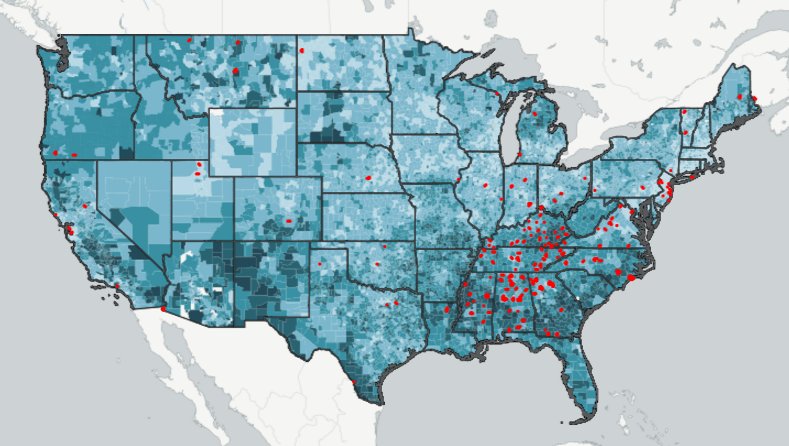'Island' School Districts: A Story of Haves and Have Nots
School districts completely surrounded by a single larger district often have vast disparities.

In the middle of the Columbus, Ohio, school district lies another district serving the small city of Bexley. Only a few thousand students attend Bexley schools, and they're more than four times less likely to live in poverty than their peers in Columbus.
Bexley is somewhat unique in that it's one of 180 school districts across the country completely surrounded by a single larger district. Known as "island districts," they're often characterized by stark socioeconomic disparities compared to their larger neighboring district, according to research by EdBuild, an education reform nonprofit group.
Most island districts were established several decades ago, but they're still being formed today. "There's an ongoing movement from wealthier areas to secede from large urban school districts," said Rebecca Sibilia, EdBuild's CEO. "School district lines should not serve the purpose of segregating wealth."
While some island school districts resemble Bexley in that they're more affluent and possess more resources than their larger districts, it's more common for island districts, particularly in the South, to be poorer than their surrounding districts. Sixty-three of the 180 island districts identified by EdBuild report student poverty rates more than 10 percentage points higher than their surrounding districts. Another 18 districts are wealthier, with student poverty rates at least 10 percentage points less than the larger district.
Inequities tend to be most apparent in areas where school revenue is more directly tied to property taxes. "An overreliance on local funding creates the incentive for these districts to be created or sustained," Sibilia said.
Groups like EdBuild advocate for more funding equity across school districts. To help offset funding disparities, some districts participate in different types of revenue sharing agreements. States like New York, for example, apply funding formulas intended to equalize schools’ revenues. Similarly, some counties levy an additional tax on all residents that’s used to fund lower-income schools. But in other cities, like Bexley, residents don't contribute any property or income tax revenues to neighboring districts.
Island school districts, because they tend to be small, are often the subject of merger discussions. Such attempts are rarely successful, however, as residents aren't keen on ceding local control of their schools. Small districts, accordingly, are widespread throughout not just rural America, but urban and suburban areas as well. A Governinganalysis of federal data earlier this year found about a third of all local districts operate only one or two public schools and just under half of districts serve fewer than 1,000 students.
Island Districts With the Largest Disparities
Some island districts that EdBuild identified exhibit particularly large discrepancies between their 2014 student poverty rate and that of their surrounding district. The following island districts with at least 1,000 students recorded the largest differences in absolute terms. 'Island' districts are listed first and outlined in red on school district maps.
Highland Park (Texas) Independent School District: 5.7 percent student poverty rate'Island' School Districts: A Story of Haves and Have Nots:
